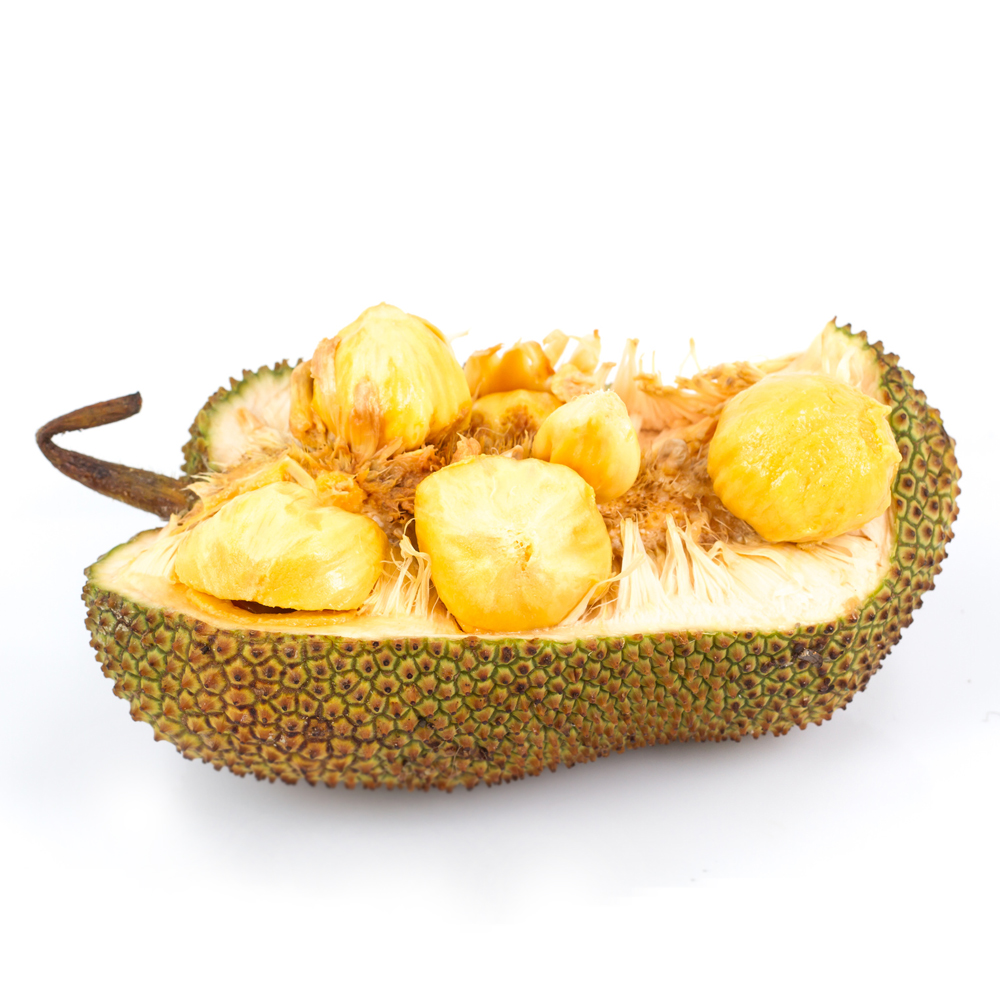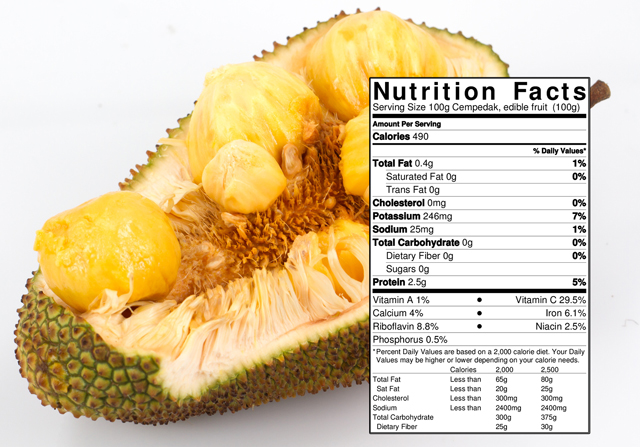Cempedak
Published: Thu, 19 Mar 2015

It is native to India, where the tree, leaves, wood, and fruit are used for a wide variety of purposes. The wood is termite and fungus resistant, the sap used to make varnish, the heartwood yields the yellow dye that is used in making Buddhist monk's robes, and the bark is used in the manufacturing of rope. Eaten unripe, the fruit is cooked like a vegetable, but the cempedak really comes into its own when fully ripe. At that point, it emits a strong sweet aroma that can easily fill a large room with its fruity chewing gum scent.Reminiscent in its look to a small jakfruit or an elongated and oversized breadfruit, the cempedak is perhaps one of the world's most delicious and under-rated fruits.

A relative of breadfruit, cempedak has a tough leathery outer skin that tears surprisingly easily when the fruit is ripe, exposing about one hundred pods of pale tan fruit attached to a large central core. The pods detach from the core with little effort, and the seed slips out from inside the pod almost automatically. The remaining fruit has the look and feel of soft jakfruit; slightly chewy, a bit juicy or creamy, with a unique sweet flavor that has a hint of cinnamon. The taste and texture of each pod is slightly different from the last, making the eating of a cempedak a delightful string of surprises. The fruit is sweet enough to be quite satiating, though as is common with delectable tropical fruits, no amount of it ever actually seems like "enough."
This is not a fruit that you are likely to have mixed feeling about, however. Commonly people either love or hate cempedak. You can safely put me in the former category.







